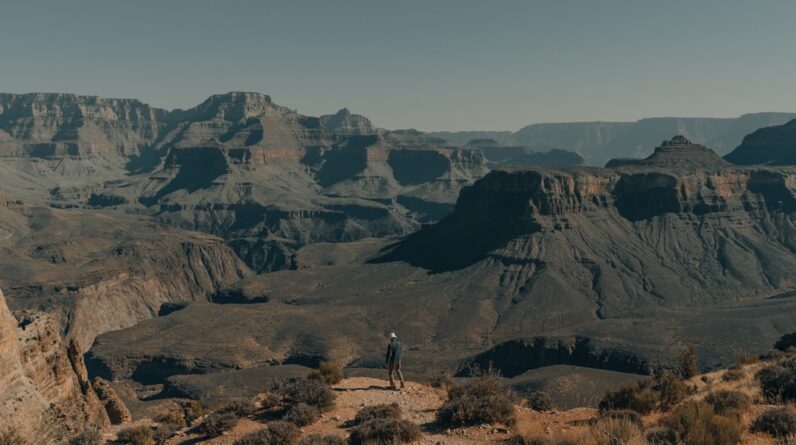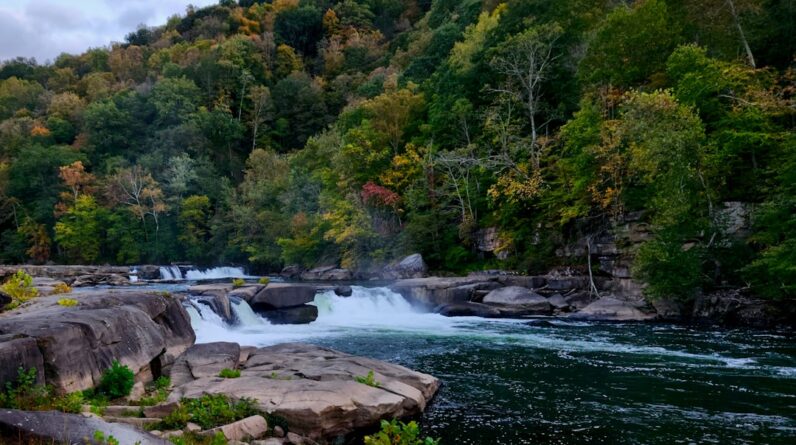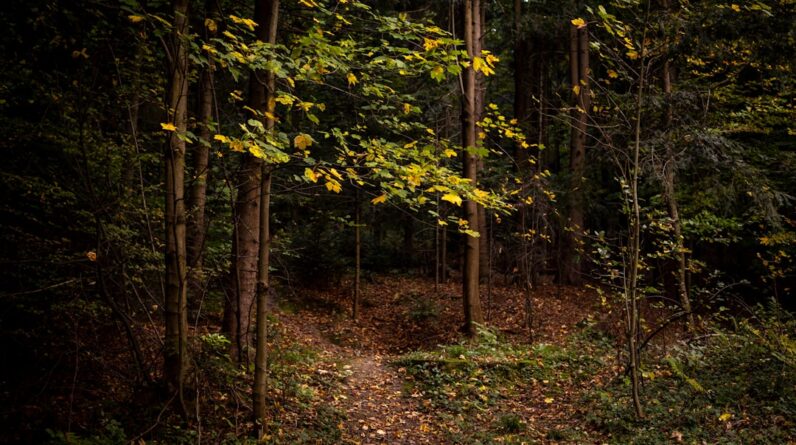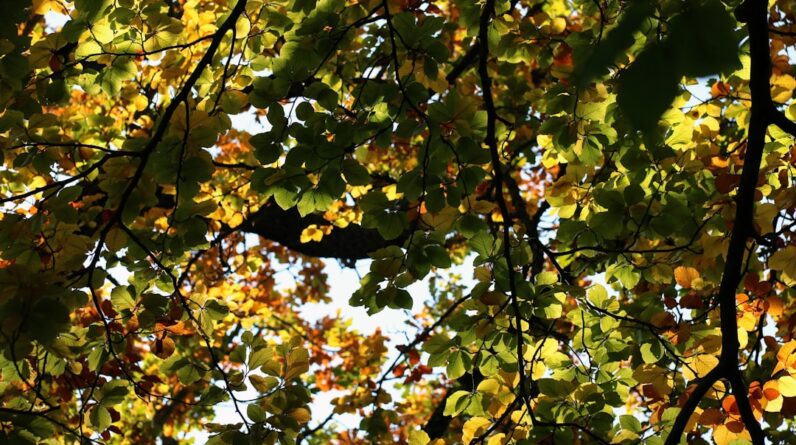Ontario, Canada is home to some of the most beautiful lakes in the world. With over 250,000 lakes, it’s no wonder that Ontario is a popular destination for outdoor enthusiasts and nature lovers. These lakes offer stunning landscapes, crystal-clear waters, and abundant wildlife, making them the perfect place for a canoeing adventure.
Canoeing is the best way to explore Ontario’s lakes because it allows you to immerse yourself in nature and experience the tranquility of the water. Unlike motorized boats, canoes are quiet and non-intrusive, allowing you to get up close and personal with the natural surroundings. Whether you’re gliding through calm waters or navigating through rapids, canoeing in Ontario offers a unique and unforgettable experience.
Key Takeaways
- Ontario’s lakes offer majestic and breathtaking landscapes for canoeing adventures.
- Choosing the right canoe is crucial for a comfortable and safe trip.
- Planning your route ahead of time can save you time and ensure a successful trip.
- Safety measures such as wearing a life jacket and checking weather conditions are essential for every canoeist.
- There are various campsites and accommodations available along the way for a comfortable stay during your trip.
Choosing the Right Canoe for Your Ontario Adventure
When planning your canoeing adventure in Ontario, it’s important to choose the right canoe for your needs. There are several factors to consider when choosing a canoe, including size, weight, material, and design.
Size is an important consideration because it determines how many people and how much gear the canoe can hold. If you’re planning on going solo or with a partner, a smaller canoe may be sufficient. However, if you’re traveling with a group or planning on carrying a lot of gear, a larger canoe may be necessary.
There are several types of canoes available in Ontario, including aluminum canoes, fiberglass canoes, and inflatable canoes. Aluminum canoes are durable and lightweight, making them a popular choice for beginners. Fiberglass canoes are more expensive but offer better performance and maneuverability. Inflatable canoes are convenient for those who don’t have space to store a traditional canoe.
Deciding whether to rent or buy a canoe depends on your budget and how often you plan on canoeing. If you’re only planning on canoeing once or twice, renting a canoe may be more cost-effective. However, if you plan on canoeing regularly, buying a canoe may be a better investment in the long run.
Planning Your Route: Tips and Tricks
Before embarking on your canoeing adventure in Ontario, it’s important to plan your route carefully. Researching the best canoe routes in Ontario will ensure that you have a safe and enjoyable trip.
When planning your route, consider factors such as distance, difficulty level, and scenery. If you’re a beginner, it’s best to choose a route that is shorter and less challenging. As you gain experience, you can gradually tackle longer and more difficult routes.
It’s also important to consider the time of year and weather conditions when planning your route. Some routes may be inaccessible or dangerous during certain seasons. Check the weather forecast before setting out and be prepared for changes in weather conditions.
Creating a successful itinerary involves balancing paddling time with rest time. Plan for breaks throughout the day to rest, eat, and explore the surroundings. It’s also a good idea to have a backup plan in case of unexpected circumstances, such as bad weather or equipment failure.
Safety Measures Every Canoeist Should Know
Safety should be a top priority when canoeing in Ontario. It’s important to have the essential safety equipment and know how to use it properly.
Some essential safety equipment for canoeing in Ontario includes personal flotation devices (PFDs), paddles, bailers or bilge pumps, and throw ropes. PFDs should be worn at all times while on the water, even if you’re a strong swimmer. Paddles should be sturdy and in good condition to ensure efficient paddling. Bailers or bilge pumps are used to remove water from the canoe in case it capsizes or takes on water. Throw ropes are used for rescuing someone who has fallen overboard.
Tips for staying safe on the water include always wearing a PFD, paddling with a partner, and staying alert to your surroundings. It’s also important to be aware of your limits and not take unnecessary risks. If you’re unsure about the conditions or your abilities, it’s best to err on the side of caution.
In case of an emergency, it’s important to know what to do. If your canoe capsizes, stay with the canoe and try to climb back in. If you can’t get back in, hold onto the canoe and wait for help. If someone falls overboard, throw them a throw rope and try to pull them back into the canoe. If you’re unable to rescue them, paddle to shore and seek help.
Campsites and Accommodations Along the Way
One of the highlights of canoeing in Ontario is the opportunity to camp along the way. There are several campsites and accommodations available in Ontario that cater to canoeists.
When choosing campsites, consider factors such as location, amenities, and availability. Some campsites may be located near popular attractions or offer amenities such as showers and toilets. It’s also important to check if reservations are required or if campsites operate on a first-come, first-served basis.
When camping in Ontario, it’s important to be prepared for the elements. Bring appropriate camping gear such as tents, sleeping bags, cooking equipment, and food. It’s also important to follow Leave No Trace principles and leave the campsite as you found it.
Fishing in Ontario’s Lakes: A Beginner’s Guide
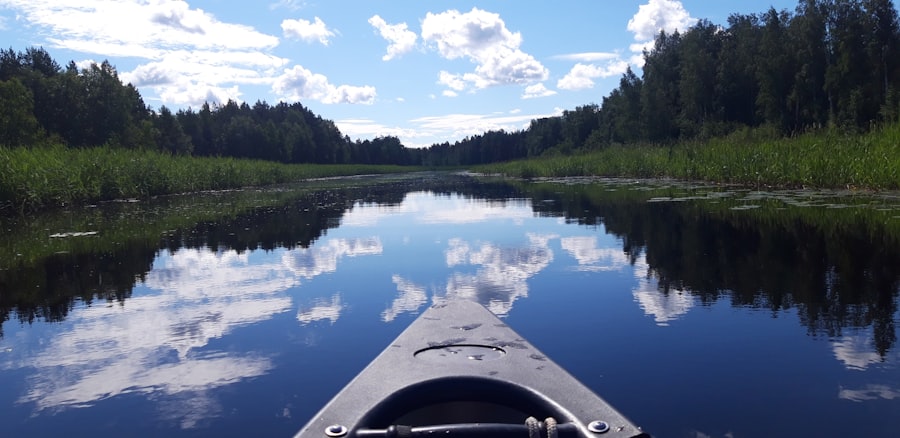
Fishing is a popular activity in Ontario’s lakes, and many canoeists enjoy casting a line while exploring the waterways. If you’re new to fishing, there are a few things you should know before you start.
Ontario is home to a wide variety of fish species, including bass, trout, pike, and walleye. Each species has its own habitat preferences and feeding habits, so it’s important to do some research before you start fishing.
Tips for beginner anglers include using the right equipment, learning basic fishing techniques, and following fishing regulations. It’s important to use the right size and type of fishing rod, reel, and line for the fish you’re targeting. Learning basic fishing techniques such as casting, reeling, and setting the hook will increase your chances of catching fish. Finally, make sure to familiarize yourself with fishing regulations and obtain the necessary licenses and permits.
Wildlife Encounters: What to Expect
Ontario is home to a diverse range of wildlife, and canoeists are likely to encounter some of these animals during their trip. It’s important to be prepared for wildlife encounters and know how to safely interact with them.
Some common wildlife found in Ontario include moose, black bears, beavers, and loons. While these animals are generally not aggressive towards humans, it’s important to keep a safe distance and not approach or feed them. Respect their natural habitat and observe them from a distance.
In case of a wildlife encounter, it’s important to know what to do. If you encounter a bear, make yourself look bigger by raising your arms and making noise. Back away slowly and avoid direct eye contact. If you encounter a moose, give it plenty of space and do not approach it. If you encounter a beaver or other small mammals, observe them from a distance and do not disturb their habitat.
Paddling Techniques for Different Lake Conditions
Ontario’s lakes can vary in conditions depending on factors such as wind, waves, and currents. It’s important to know different paddling techniques for different lake conditions to ensure a safe and enjoyable trip.
In calm waters, use smooth and efficient strokes to propel the canoe forward. Keep your paddle close to the canoe and use your core muscles to generate power. In rough waters, use a more aggressive paddling technique to navigate through waves and currents. Use a wider stance and a stronger stroke to maintain stability and control.
When navigating through different types of water, it’s important to be aware of your surroundings and adjust your paddling technique accordingly. For example, when paddling upstream, use a more powerful stroke to counteract the current. When paddling downstream, use a lighter stroke to maintain control.
Exploring Ontario’s Indigenous Heritage and Culture
Ontario is rich in Indigenous heritage and culture, and canoeing provides a unique opportunity to explore and learn about this history. It’s important to approach Indigenous sites with respect and learn about the protocols and customs associated with these sites.
There are several resources available for learning more about Indigenous culture in Ontario. Visit local museums, cultural centers, and art galleries to learn about the history, traditions, and art of the Indigenous peoples of Ontario. Participate in guided tours or workshops led by Indigenous guides to gain a deeper understanding of their culture.
When visiting Indigenous sites, it’s important to follow any rules or guidelines set by the community. Respect sacred sites and artifacts by not touching or removing them. Ask permission before taking photos or recording videos, as some sites may have restrictions on photography.
Making the Most of Your Ontario Canoeing Experience: Dos and Don’ts
To make the most of your canoeing experience in Ontario, here are some dos and don’ts to keep in mind:
– Do plan ahead and research the best routes, campsites, and attractions.
– Do pack appropriately for the weather and bring essential gear such as PFDs, paddles, and safety equipment.
– Do respect the environment by following Leave No Trace principles and leaving the campsite as you found it.
– Don’t underestimate the power of the water and take unnecessary risks.
– Don’t approach or feed wildlife, and always keep a safe distance.
– Don’t litter or leave any trace of your presence in the wilderness.
In conclusion, canoeing in Ontario’s majestic lake landscapes offers a unique and unforgettable experience. By choosing the right canoe, planning your route carefully, and following safety measures, you can have a safe and enjoyable trip. Take the time to explore Ontario’s Indigenous heritage and culture, and make the most of your experience by respecting the environment and wildlife. Whether you’re a beginner or an experienced canoeist, Ontario’s lakes offer endless opportunities for adventure and exploration.
If you’re an outdoor enthusiast looking for more adventure, you might also be interested in our article on the health benefits of avocado. Avocado is not only delicious but also packed with nutrients that can boost your overall well-being. Check out our article to learn more about how this superfood can improve your health and add a tasty twist to your meals.
FAQs
What is the article about?
The article is about exploring Ontario’s majestic lake landscapes through canoeing.
What are some of the lakes mentioned in the article?
Some of the lakes mentioned in the article are Lake Superior, Lake Huron, Lake Ontario, and Algonquin Park.
What are some tips for canoeing in Ontario?
Some tips for canoeing in Ontario include checking the weather forecast, bringing appropriate gear, packing enough food and water, and being aware of the rules and regulations of the area.
What are some of the benefits of canoeing in Ontario?
Some of the benefits of canoeing in Ontario include experiencing the natural beauty of the area, getting exercise, and having the opportunity to see wildlife up close.
What are some safety precautions to take while canoeing in Ontario?
Some safety precautions to take while canoeing in Ontario include wearing a life jacket, staying aware of your surroundings, avoiding alcohol and drugs, and letting someone know your itinerary.
What are some popular canoe routes in Ontario?
Some popular canoe routes in Ontario include the French River, the Missinaibi River, and the Magnetawan River.
What is the best time of year to go canoeing in Ontario?
The best time of year to go canoeing in Ontario is typically from May to September, when the weather is warmer and the water is calmer.




